6.15: Solutions to Selected Problems
- Page ID
- 191306
\( \newcommand{\vecs}[1]{\overset { \scriptstyle \rightharpoonup} {\mathbf{#1}} } \)
\( \newcommand{\vecd}[1]{\overset{-\!-\!\rightharpoonup}{\vphantom{a}\smash {#1}}} \)
\( \newcommand{\id}{\mathrm{id}}\) \( \newcommand{\Span}{\mathrm{span}}\)
( \newcommand{\kernel}{\mathrm{null}\,}\) \( \newcommand{\range}{\mathrm{range}\,}\)
\( \newcommand{\RealPart}{\mathrm{Re}}\) \( \newcommand{\ImaginaryPart}{\mathrm{Im}}\)
\( \newcommand{\Argument}{\mathrm{Arg}}\) \( \newcommand{\norm}[1]{\| #1 \|}\)
\( \newcommand{\inner}[2]{\langle #1, #2 \rangle}\)
\( \newcommand{\Span}{\mathrm{span}}\)
\( \newcommand{\id}{\mathrm{id}}\)
\( \newcommand{\Span}{\mathrm{span}}\)
\( \newcommand{\kernel}{\mathrm{null}\,}\)
\( \newcommand{\range}{\mathrm{range}\,}\)
\( \newcommand{\RealPart}{\mathrm{Re}}\)
\( \newcommand{\ImaginaryPart}{\mathrm{Im}}\)
\( \newcommand{\Argument}{\mathrm{Arg}}\)
\( \newcommand{\norm}[1]{\| #1 \|}\)
\( \newcommand{\inner}[2]{\langle #1, #2 \rangle}\)
\( \newcommand{\Span}{\mathrm{span}}\) \( \newcommand{\AA}{\unicode[.8,0]{x212B}}\)
\( \newcommand{\vectorA}[1]{\vec{#1}} % arrow\)
\( \newcommand{\vectorAt}[1]{\vec{\text{#1}}} % arrow\)
\( \newcommand{\vectorB}[1]{\overset { \scriptstyle \rightharpoonup} {\mathbf{#1}} } \)
\( \newcommand{\vectorC}[1]{\textbf{#1}} \)
\( \newcommand{\vectorD}[1]{\overrightarrow{#1}} \)
\( \newcommand{\vectorDt}[1]{\overrightarrow{\text{#1}}} \)
\( \newcommand{\vectE}[1]{\overset{-\!-\!\rightharpoonup}{\vphantom{a}\smash{\mathbf {#1}}}} \)
\( \newcommand{\vecs}[1]{\overset { \scriptstyle \rightharpoonup} {\mathbf{#1}} } \)
\( \newcommand{\vecd}[1]{\overset{-\!-\!\rightharpoonup}{\vphantom{a}\smash {#1}}} \)
\(\newcommand{\avec}{\mathbf a}\) \(\newcommand{\bvec}{\mathbf b}\) \(\newcommand{\cvec}{\mathbf c}\) \(\newcommand{\dvec}{\mathbf d}\) \(\newcommand{\dtil}{\widetilde{\mathbf d}}\) \(\newcommand{\evec}{\mathbf e}\) \(\newcommand{\fvec}{\mathbf f}\) \(\newcommand{\nvec}{\mathbf n}\) \(\newcommand{\pvec}{\mathbf p}\) \(\newcommand{\qvec}{\mathbf q}\) \(\newcommand{\svec}{\mathbf s}\) \(\newcommand{\tvec}{\mathbf t}\) \(\newcommand{\uvec}{\mathbf u}\) \(\newcommand{\vvec}{\mathbf v}\) \(\newcommand{\wvec}{\mathbf w}\) \(\newcommand{\xvec}{\mathbf x}\) \(\newcommand{\yvec}{\mathbf y}\) \(\newcommand{\zvec}{\mathbf z}\) \(\newcommand{\rvec}{\mathbf r}\) \(\newcommand{\mvec}{\mathbf m}\) \(\newcommand{\zerovec}{\mathbf 0}\) \(\newcommand{\onevec}{\mathbf 1}\) \(\newcommand{\real}{\mathbb R}\) \(\newcommand{\twovec}[2]{\left[\begin{array}{r}#1 \\ #2 \end{array}\right]}\) \(\newcommand{\ctwovec}[2]{\left[\begin{array}{c}#1 \\ #2 \end{array}\right]}\) \(\newcommand{\threevec}[3]{\left[\begin{array}{r}#1 \\ #2 \\ #3 \end{array}\right]}\) \(\newcommand{\cthreevec}[3]{\left[\begin{array}{c}#1 \\ #2 \\ #3 \end{array}\right]}\) \(\newcommand{\fourvec}[4]{\left[\begin{array}{r}#1 \\ #2 \\ #3 \\ #4 \end{array}\right]}\) \(\newcommand{\cfourvec}[4]{\left[\begin{array}{c}#1 \\ #2 \\ #3 \\ #4 \end{array}\right]}\) \(\newcommand{\fivevec}[5]{\left[\begin{array}{r}#1 \\ #2 \\ #3 \\ #4 \\ #5 \\ \end{array}\right]}\) \(\newcommand{\cfivevec}[5]{\left[\begin{array}{c}#1 \\ #2 \\ #3 \\ #4 \\ #5 \\ \end{array}\right]}\) \(\newcommand{\mattwo}[4]{\left[\begin{array}{rr}#1 \amp #2 \\ #3 \amp #4 \\ \end{array}\right]}\) \(\newcommand{\laspan}[1]{\text{Span}\{#1\}}\) \(\newcommand{\bcal}{\cal B}\) \(\newcommand{\ccal}{\cal C}\) \(\newcommand{\scal}{\cal S}\) \(\newcommand{\wcal}{\cal W}\) \(\newcommand{\ecal}{\cal E}\) \(\newcommand{\coords}[2]{\left\{#1\right\}_{#2}}\) \(\newcommand{\gray}[1]{\color{gray}{#1}}\) \(\newcommand{\lgray}[1]{\color{lightgray}{#1}}\) \(\newcommand{\rank}{\operatorname{rank}}\) \(\newcommand{\row}{\text{Row}}\) \(\newcommand{\col}{\text{Col}}\) \(\renewcommand{\row}{\text{Row}}\) \(\newcommand{\nul}{\text{Nul}}\) \(\newcommand{\var}{\text{Var}}\) \(\newcommand{\corr}{\text{corr}}\) \(\newcommand{\len}[1]{\left|#1\right|}\) \(\newcommand{\bbar}{\overline{\bvec}}\) \(\newcommand{\bhat}{\widehat{\bvec}}\) \(\newcommand{\bperp}{\bvec^\perp}\) \(\newcommand{\xhat}{\widehat{\xvec}}\) \(\newcommand{\vhat}{\widehat{\vvec}}\) \(\newcommand{\uhat}{\widehat{\uvec}}\) \(\newcommand{\what}{\widehat{\wvec}}\) \(\newcommand{\Sighat}{\widehat{\Sigma}}\) \(\newcommand{\lt}{<}\) \(\newcommand{\gt}{>}\) \(\newcommand{\amp}{&}\) \(\definecolor{fillinmathshade}{gray}{0.9}\)Exercise 6.3.1:

Exercise 6.4.1:
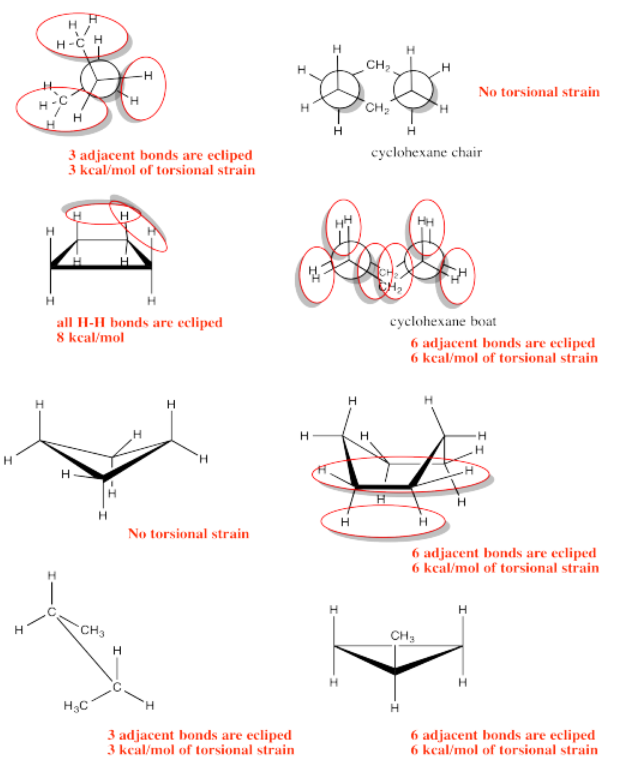
Exercise 6.4.2:
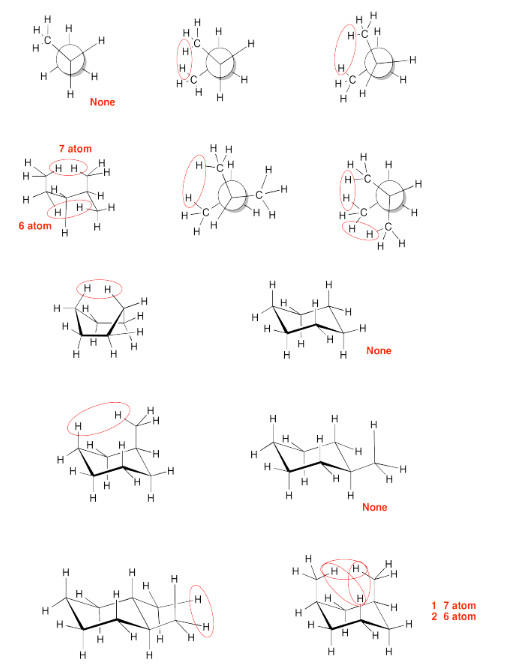
Exercise 6.4.3a:
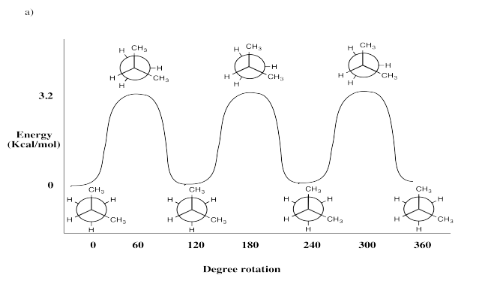
Exercise 6.4.3b:

Exercise 6.4.3c:
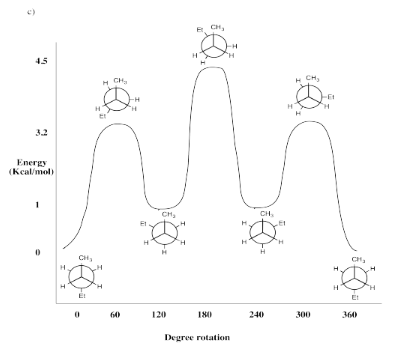
Exercise 6.8.1:

Exercise 6.9.1

Exercise 6.9.2:
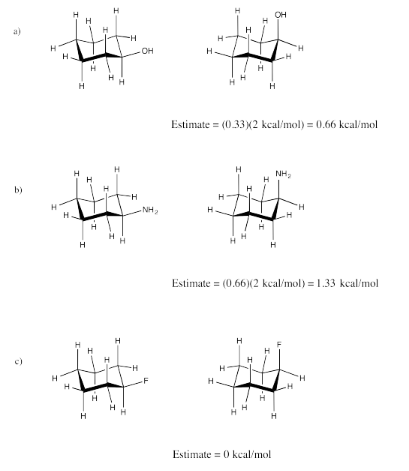
Exercise 6.9.3:
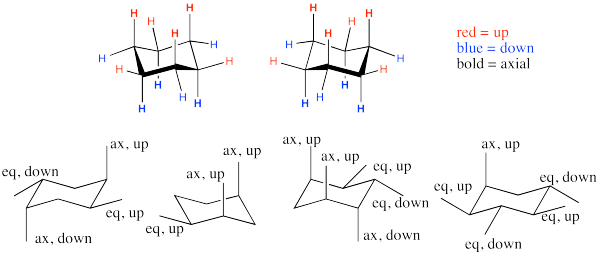
Exercise 6.10.1:

Exercise 6.10.2:
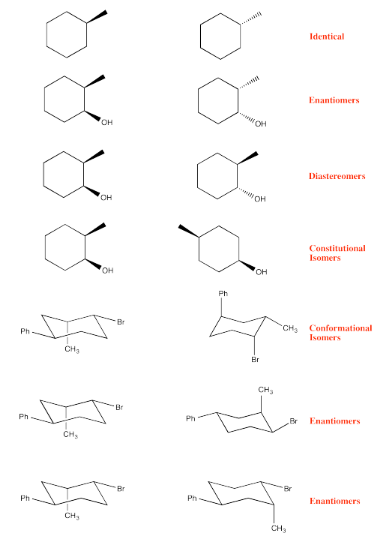
Exercise 6.10.3:
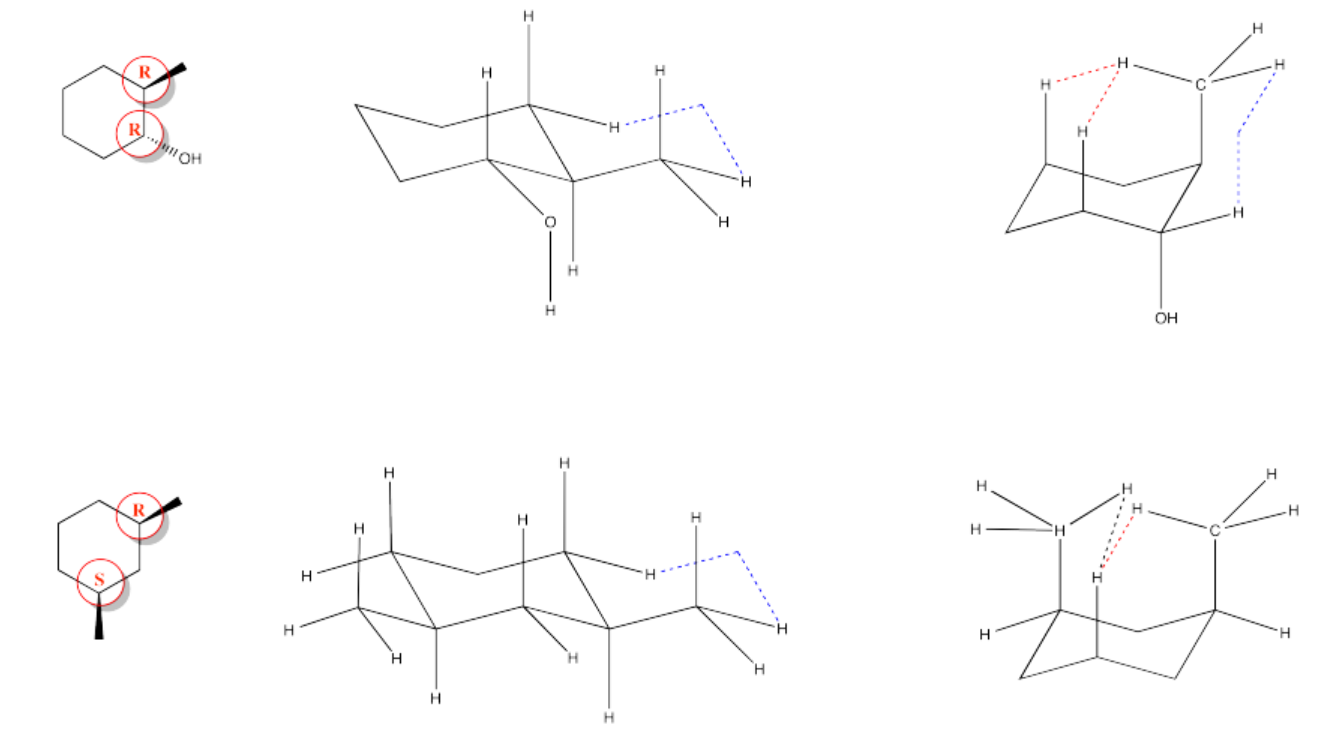
Exercise 6.10.4:

Exercise 6.10.5:
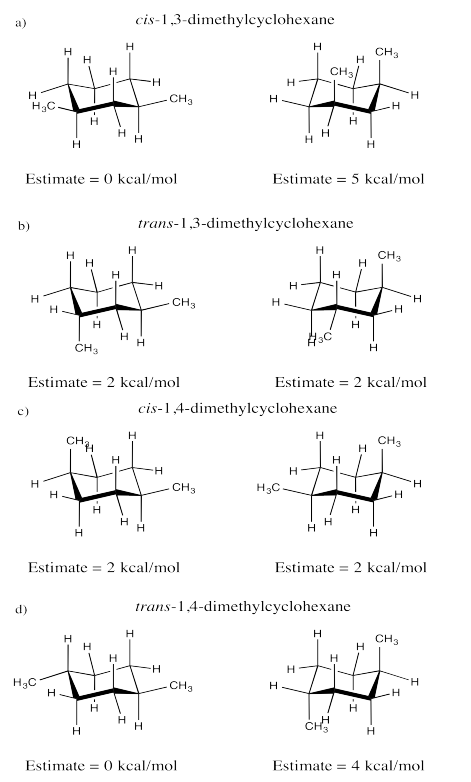
Exercise 6.11.1:
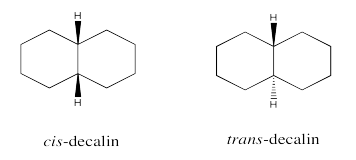
Exercise 6.11.2:
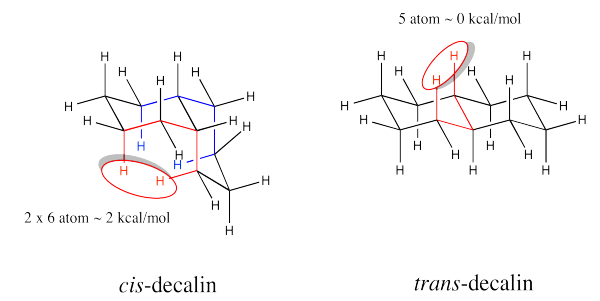
Exercise 6.11.3:
- The substituents are always trans along the junctions between each pair of rings. The steroids resemble a series of trans-decalin structures.
- The overall structure would be more wide and wavy like a trans-decalin, rather than curled or boxy like a cis-decalin.
Exercise 6.11.4:
Bicyclo[2.2.0]decane
Exercise 6.11.5:
a) Bicyclo[2.1.1]hexane b) Bicyclo[3.2.1]octane c) Bicyclo[2.1.0]pentane (more commonly called "housane")
d) Bicyclo[2.2.2]octane e) cis-Bicyclo[3.3.0]octane
f) cis-Bicyclo[1.1.0]butane g) Bicyclo[1.1.1]pentane h) Bicyclo[4.3.3]dodecane
Exercise 6.11.6:
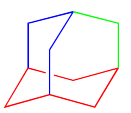
Although we could sketch out many rings using adamantane, just three rings are needed to include all the carbon atoms in the structure. Thus, adamantane is considered a tricyclic system. The systematic nomenclature of tricyclic systems gets a little more complicated, so we won't worry about that.
Exercise 6.11.7:
If cyclodecane adopted a regular diamond lattice conformation, there would be a whopping 8 atom interaction in the middle of the ring. That interaction isn't even included in our basis set. It would cost at least 6-7 kcal/mol. As a result, the cyclodecane adopts a twisted structure to avoid this interaction.

Exercise 6.11.8:
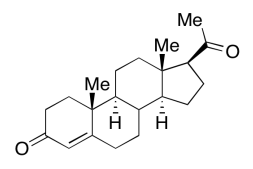
Exercise 6.11.9:
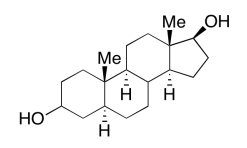
Exercise 6.12.1:
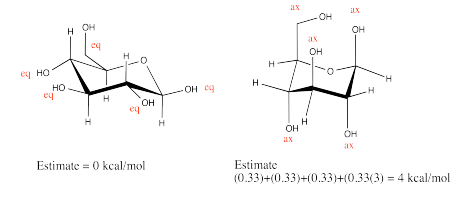
Exercise 6.12.2:

Exercise 6.12.3:
a) The β-D-glucose isomer should be the more stable isomer. The β-D-glucose isomer places the C1 hydroxyl group in the equatorial position.
b) The β-D-glucose isomer should be the more abundant isomer.
c) This is due to something called the anomeric effect. In solvents of modest polarity, such as dicholoromethane, the α-D-glucose isomer is not as polar as the β-D-glucose isomer. In the α-D-glucose isomer the dipoles of the ring oxygen and the C1 hydroxyl group opposing each other (therefore the overall effect is the molecule is less polar). In addition, the α-D-glucose isomer is stabilized by hyper conjugation of the ring oxygen and C1. For more information see http://en.Wikipedia.org/wiki/Anomeric_effect
d) A more polar environment would promote having more of the β-D-glucose isomer around. In the β-D-glucose isomer, the dipoles of the ring oxygen and the C1 hydroxyl group align each other (therefore the overall effect is the molecule is more polar).
Exercise 6.13.1:
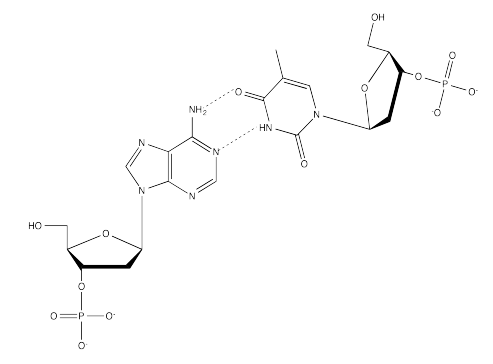
Exercise 6.13.2:
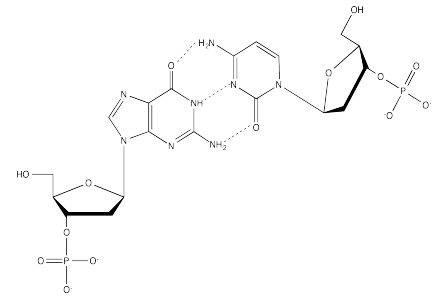
Exercise 6.13.3:
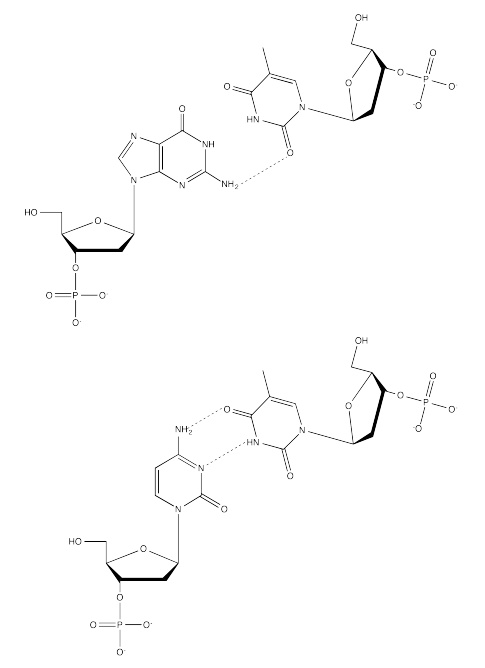
Exercise 6.13.4:
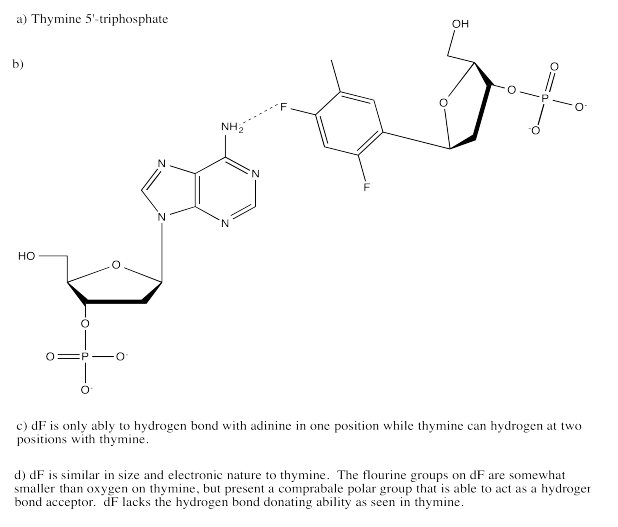
Exercise 6.13.5:

Exercise 6.14.1:
a)
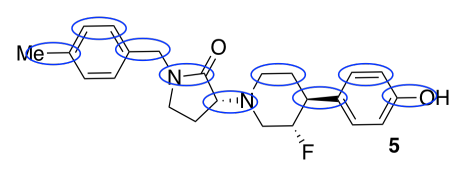
b) about 9 Å
c)

d) Stereochemistry. Because biological receptors are generally proteins containing unique, and chiral, binding sites, they hope to find a stereoisomer that fits the GluN2B receptor, but not the hERG receptor.
e) These compounds are diastereomers of each other.
f)
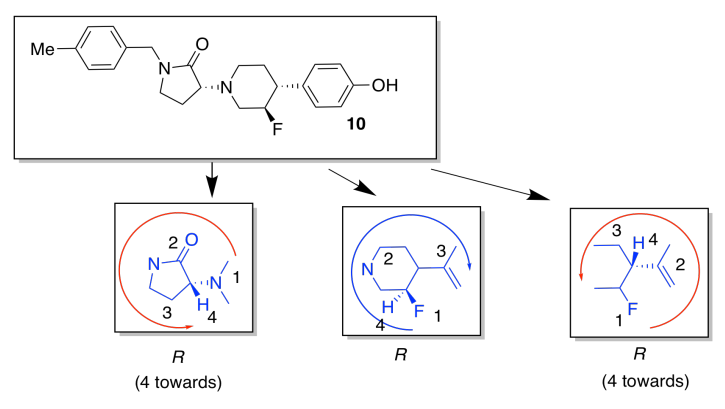
g)

h)

The ring introduces conformational rigidity by preventing the bond from undergoing complete rotation; it is tied back by the connection on the other side of the ring.
i) They were trying to decrease the number of possible conformations, or shapes, that the compound could adopt. That way, it would be less likely to bind in both the GluN2B receptor and the hERG receptor.
j) The substituents around the flexible six-membered ring could adopt a number of conformations. We will choose ways that minimize additional steric interactions so that we can focus on the most basic interactions.
Note that amines do not usually have fixed stereochemistry; the fourth substituent on an amine nitrogen is a lone pair, which does not occupy a fixed position in space. Unlike a carbon, the nitrogen can readily switch from one stereochemistry to another.

The one on the left, with more equatorial substituents and thus fewer steric interactions, is the more stable one.
Exercise 6.14.2:
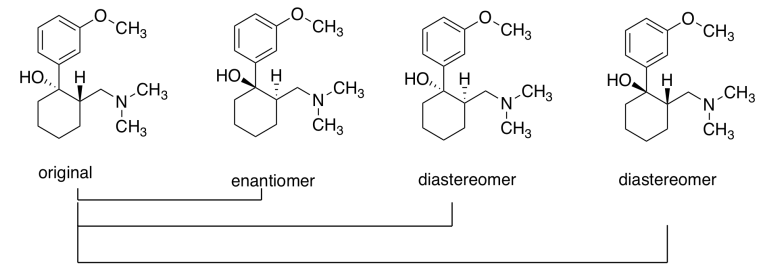
b) The original and its enantiomer; the first two above, from the left.
c)
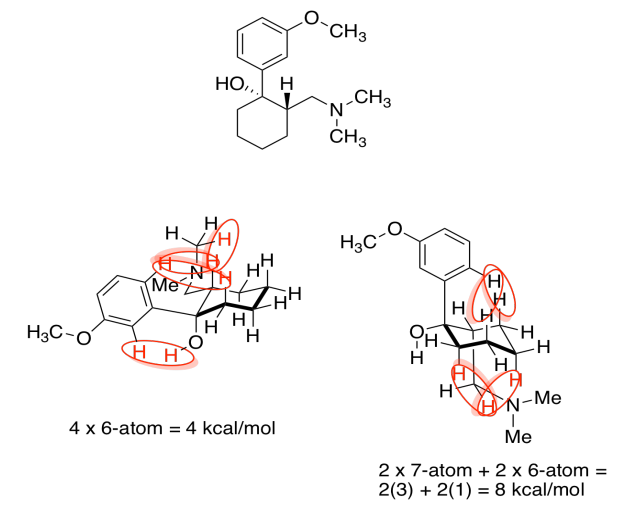
d) The one on the left, with both groups equatorial and less steric strain, is more stable.
e) If the one on the left is active, a lower dose can be used because it will spend more time in the active form and be able to bond more receptors. If the less stable one, on the right, is the active form, a higher dose will be needed because only a small fraction of the molecules will be ready to bind the receptor at any given time.


